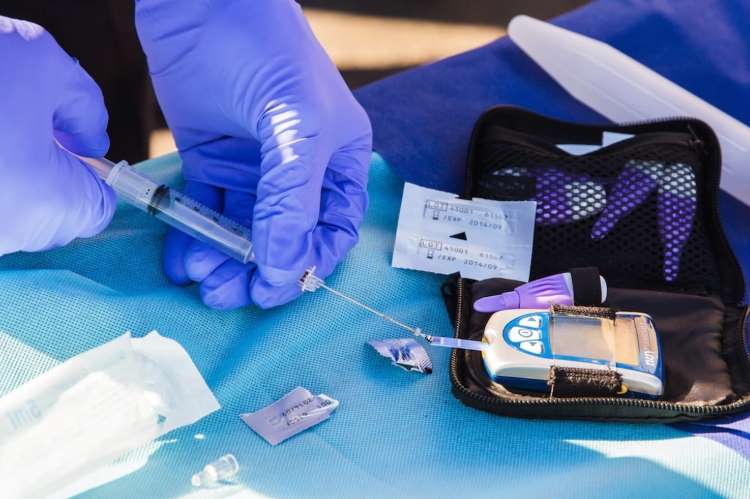
World Health Day is observed every year on April 7. This year, the day is observed on the theme, ‘Health for All’, marking the 75th anniversary of the World Health Organisation. Achieving Universal Health Coverage is one of the targets set by the nations when they adopted the 2030 Agenda for Sustainable Development in 2015. Prior to the Covid-19 pandemic, there was worldwide progress towards UHC. The pandemic, however, disrupted essential services in most countries.
One of the key challenges in achieving universal health coverage is the increasing case load of non-communicable diseases. The 2030 Agenda for Sustainable Development recognises NCDs as a major challenge for sustainable development.
As part of the agenda, heads of state and government committed to develop ambitious national responses by 2030 to reduce by a third premature mortality from NCDs through prevention and treatment (SDG target 3.4). WHO plays a leadership role in the coordination of the global fight against NCDs and the achievement of the target 3.4 for of SDGs.
READ I Regulation of e-pharmacies: India can draw from global best practices
Non-communicable diseases
Noncommunicable diseases kill 41 million people globally each year, which is 74% of all deaths. The contribution of NCDs in all deaths in India has risen to a staggering 64.9%, according to a study released by the Apollo Hospitals Group in April 2021.
In 2019, the World Health Assembly extended the WHO Global action plan for the prevention and control of NCDs 2013–2020 to 2030 and called for the development of an implementation roadmap 2023-2030 to accelerate progress in preventing and controlling NCDs. The roadmap supports actions to achieve a set of nine global targets with the greatest impact towards prevention and management of NCDs.
The global economic burden of NCDs will be around $47 trillion in output loss within the next two decades. The economic cost of NCDs has also a significant macroeconomic effect on the Indian economy. NCDs reduce the productivity of the workforce, resulting in the reduction of overall economic output. It is estimated that every 10% increase in NCDs mortality results in a 0.5% reduction in annual economic growth.
READ I Agritech startups key to farm productivity, market access
Unhealthy diets and NCDs
Changing lifestyles, unhealthy diet and dietary patterns, and consumption of unhealthy ingredients such as sugar, salt, saturated fats, and trans fats are major drivers of NCDs. High intake of fast food and ultra-processed foods increases these health risks. Diets high in sugars, saturated and trans fats, low fiber foods and high-sugar drinks contribute to increasing NCDs and other health problems. Here, I will focus only on one of the NCDs — diabetes and one of the unhealthy ingredients — sugar.
Diabetes is one of the four major types of noncommunicable diseases which accounts for 80% of NCDs. Main reason for increasing diabetes is consumption of too much sugar resulting in type 2 diabetes. At least 5% of the world’s population is suffering from diabetes, according to a report published by National Center for Biotechnology Information (NCBI). Diabetes is a severe disease which causes problems related to the heart, blood pressure, eyes and kidneys.
According to WHO, around 422 million people in the world are suffering from diabetes and about 15 lakh people die due to it every year. In the WHO South-East Asia Region (2022), more than 96 million people are estimated to have diabetes, and another 96 million to be pre-diabetic, causing at least 600,000 deaths annually.
India is often referred to as the diabetes capital of the world as it accounts for 17% of the total number of diabetes patients in the world. 1 in 12 Indians, formally diagnosed with diabetes which makes it the second most affected in the world after China. There are currently close to 80 million people with diabetes in India and this number is expected to increase to 135 million by 2045.
The Indian state of Kerala tops among states for diabetes, 19.4% people have diabetes in Kerala. In the age group of 45 to 69 years nearly two third (67.7%) had either diabetes or pre-diabetes.
We all know that diabetes is usually caused by an unhealthy diet and a sedentary lifestyle. Due to this, the blood sugar level increases. If we correct our lifestyle patterns and eat healthy food, and indulge in regular exercises, our blood sugar levels can be managed.
Sugar production and consumption
India has emerged as the world’s largest producer and consumer of sugar surpassing Brazil. It is also the second largest exporter of sugar. During the marketing year 2021–2022, 35.8 million tonne sugar was produced in India. It is anticipated to reach 36.5 million tons in the marketing year 2022–2023. Among the Indian states, Maharashtra surpassed Uttar Pradesh in 2022 to reclaim India’s top spot for sugar production.
Sugar and sweet consumption have been popular and intrinsic to Indian culture, traditions, and religion from ancient times. Traditionally, any occasion in India is celebrated with intake of sweets. Also, it is customary to “sweeten the mouth” after every meal, any joyous occasion, religious festival, social gathering, etc. It is considered mandatory to offer sweets to the Gods on every religious occasion.
The consumption volume of sugar in India in fiscal year 2022 was 28.5 million tonne. This was an increase of 27 million tonne from the previous year. The reason why Indians end up eating so much sugar that is they have the habit of consuming traditional Indian sweets along with sugar-sweetened beverages and Indian beverages like sweetened buttermilk etc., which are very high in calories and glycemic load.
In addition, being the cheapest sources of energy, which account for 10% of daily caloric intake, are sugar and jaggery. However, WHO recommends limiting added sugars to no more than 6% of calories each day. For an adult who has a normal BMI, WHO recommends only 6 teaspoons of sugar, which is 25 grams to be exact. However, on an average, Indian men consume 36g or 9 teaspoons; Women 20g or 5 teaspoons and Children: 12g or 3 teaspoons.
Generating awareness among consumers is essential. Eat Right India (ERI), a pan-India movement launched by FSSAI in July 2018, is an initiative to generate consumer awareness on healthier diets. As part of the campaign, FSSAI initiated a nation-wide social media campaign with a slogan Aaj Se Thoda Kam.
The objective of the campaign is to bring about dietary modifications to reduce the diet-related non-communicable diseases like diabetes, hypertension, heart diseases, etc. It encourages the consumers to gradually decrease the consumption of Sugar, salt and fat; and manufacturers to reformulate their products.
Front of the Pack labelling (FoPL), proposed by WHO, is a cost-effective messaging strategy and a simple, inexpensive, practical & effective tool, to help consumers to make informed and healthier choices. FoPL refers to nutrition labelling systems that are presented on the front of food packages with the aim of supporting consumers to make informed choices at the point of purchase by delivering simplified and at-a-glance nutritional information about unhealthy ingredients.
The purpose is to warn/alerts the consumers about the unhealthy ingredients such as Sugar, Salt & Saturated fat. Hence immediate implementation of FoPL in India, a mandatory warning label, is the need of the hour.
(George Cheriyan is a consumer activist and an Indian expert on food safety.)
George Cheriyan is Director of Centre for Environment and Sustainable Development India, a national NGO in Special Consultative Status with UN-ECOSOC, and accredited with UNEP & UN ESCAP. CESDI is also a member of South Asia Network on SDGs.

